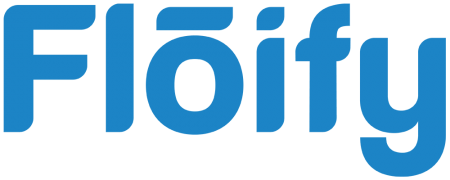The Current State Of The End-To-End Digital Mortgage
New technologies were gradually making the mortgage-lending process more efficient – then COVID-19 hit. Mortgage-origination volumes hit new heights, and mortgage loan originators faced a tough new reality of remote work in a field that still hadn’t fully digitized. Fortunately, a flurry of emergency activity from regulators resulted in many states allowing remote online notarizations (RON), which lets notaries oversee real estate transactions virtually. This is something that those at the industry’s forefront have long wanted to see.
These have all been important steps towards the fully digital mortgage, which at least one expert calls the mortgage industry’s white whale. The digital mortgage has earned that name because a widely available, end-to-end digital mortgage process still isn’t a reality, despite exciting tech developments and consumer interest.
But what would a fully digital mortgage process look like if it were here today? And what are the challenges standing in the way of the true digital mortgage? In this blog post, we’ll look at the current state of the digital mortgage.
What Is A Digital Mortgage?
The mortgage experience is increasingly online, particularly when it comes to customer-facing elements. Gone are the days when borrowers had to drop by an office to hand in tax returns and bank statements.
However, a fully digital mortgage involves much more than online applications via banking websites or the ability to sign disclosures and documents virtually. It’s an entirely paperless mortgage that taps the latest technology for every step of the borrowing journey, from the initial application to closing and servicing the loan.
The digital mortgage has many benefits for borrowers and originators alike. For consumers, it’s hard to overstate the convenience of being able to secure a loan without setting foot outside.
For lenders, technology can simplify the mortgage-origination steps, shorten closing times, and slash manual data entry, the American business magazine Forbes reports. Embracing digital mortgage tools also frees up time so that originators can focus on marketing and growing their businesses.
What’s The Status Of Fully Digital Mortgages Today?
In recent years, loan originators have been ramping up investments in mortgage technology as the industry continues on the path to complete digitization. On average, annual spending on loan-origination software by lenders has increased slowly but steadily by 2.5% in the past 5 years, according to research from McKinsey & Company.
The U.S.-based management consultancy anticipates that this trend will persist: “In the near future and amid growing investment, we expect technology-driven innovation to seep into core platforms and back-end technology.”
As loan-origination software sales grow, so does the number of available tech solutions. For example, Floify continues to deploy innovative features to help loan originators transform operations towards the fully digital mortgage. Floify’s Hybrid E-Closing enables eSigning for non-notarized closing documents and integrates with the eOriginal platform and ICE Mortgage Technology’s Encompass eNote. These features focus on an area where the least amount of digital adoption has occurred to date: the closing.
What Challenges Remain?
The rapid tech advances seen in recent years have removed many barriers to the end-to-end digital mortgage. With existing technology, much of the mortgage process could be completed online. However, the industry isn’t yet in a place where completely digitized eClosing processes – which involve eNotaries, who verify transactions electronically, and eNotes, the digital equivalent of the promissory note that binds a borrower to repay a loan – are available everywhere.
Here are 3 main challenges related to this:
- Legislation
Legislation remains a hurdle in different parts of the U.S., although this is rapidly changing. In 2017, only a handful of states had passed remote notarization laws, compared to 38 today. There’s hope that a federal bill will give the greenlight to RONs nationally, although it has been stuck in Congress since 2020. - Aversion to Change
Some in the industry are reluctant to embrace change. Loan originators might fear that a fully automated process will make them redundant. Yet research suggests that customer relationships with loan originators do matter. Some 68% of borrowers say they chose their latest mortgage lender from one of their current financial services providers or a personal referral, according to a recent survey from ICE Mortgage Technology. Clearly, the role of loan originators, as well as the relationships that they cultivate with clients, is still important. - Demographics
Demographic preferences have also held back the adoption of the fully digital mortgage – but that’s quickly shifting. Nearly 70% of Gen Z and Millennials view an online mortgage process favorably, according to the same survey, which signals “a generational shift.”
Demographics, industry trends, and federal and state laws may be temporary hurdles, but it’s clear that consumer demand is driving change. About 60% of today’s borrowers – including both homebuyers and those refinancing existing loans – are interested in a fully digital mortgage application process, according to McKinsey & Company.
Originators who fail to take advantage of the latest digital channels are limiting their growth prospects. “Failure to update legacy processes can trickle down into elevated origination costs and delayed cycle times,” McKinsey & Company warns. “Moreover, when demand rises, many originators cannot take full advantage, because they lack the ability to scale operations quickly enough.”

Floify is a digital mortgage point-of-sale solution that streamlines the loan process by providing a secure application, communication, and document portal between lenders, borrowers, referral partners, and other mortgage stakeholders. Loan originators use the platform to collect and verify borrower documentation, track loan progress, communicate with borrowers and real estate agents, and close loans faster. The company is based in Boulder, Colorado and is privately held. For more information, visit the company’s website at floify.com



